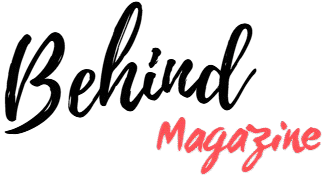In the modern era of innovation and productivity, the term duaction is steadily gaining attention among educators, professionals, and personal development enthusiasts. Duaction, at its core, is about performing two interconnected actions simultaneously in a way that maximizes efficiency and produces better outcomes. While it sounds similar to multitasking, duaction is more strategic — it focuses on pairing activities that complement each other instead of splitting attention between unrelated tasks.
Understanding Duaction
The word duaction combines “dual” and “action,” meaning it involves carrying out two actions at the same time in a coordinated manner. The idea is to enhance learning, performance, or productivity by allowing both actions to support one another.
For example, a student might practice speaking a foreign language while also writing key vocabulary. In this case, both activities feed into the same skill-building goal, making the learning process faster and more effective.
Why Duaction Matters in Today’s World
Time has become one of the most valuable resources in our daily lives. People are constantly searching for ways to achieve more without overloading themselves. Duaction provides a practical approach to optimizing time by integrating activities that work well together.
From education to sports to business, duaction is transforming the way people approach tasks. It is not about doing more work — it’s about doing the right work in a smarter, more connected way.
The Difference Between Duaction and Multitasking
Many confuse duaction with multitasking, but the two are very different. Multitasking often forces individuals to switch between unrelated tasks, which can reduce focus and increase mistakes. Duaction, on the other hand, connects two activities that share a purpose or reinforce each other.
Example:
-
Multitasking: Writing an email while listening to a meeting unrelated to the email’s subject.
-
Duaction: Taking meeting notes while actively participating in the discussion.
This alignment is what makes duaction more productive and less mentally exhausting.
How Duaction Works in Education
Duaction is especially valuable in modern learning environments where students need to build multiple skills at once. Teachers and trainers often use this method to make lessons more engaging and effective.
Some examples in education include:
-
Reading a chapter while simultaneously highlighting key points.
-
Conducting science experiments while documenting results in real time.
-
Practicing pronunciation while writing down the same words.
Such approaches improve knowledge retention, strengthen multiple abilities, and make learning more interactive.
Using Duaction in the Workplace
The business world is built on efficiency, and duaction is a natural fit for professional environments. Employees and leaders can save time and improve results by combining related activities, such as:
-
Reviewing project guidelines while organizing task schedules.
-
Providing mentorship while completing a collaborative project.
-
Hosting a product demonstration while answering client questions.
These methods not only save time but also strengthen communication and team coordination.
Duaction in Sports and Fitness
Athletes and coaches have been applying duaction principles for years without necessarily naming them. Combining complementary exercises builds strength, agility, and endurance more efficiently.
For example:
-
Football players practice ball handling while sprinting to improve speed and coordination.
-
Swimmers focus on breathing techniques while working on stroke improvement.
-
Martial artists perform balance drills while practicing defense moves.
The integration of physical and mental skills through duaction can accelerate overall performance.
Benefits of Practicing Duaction
Incorporating duaction into daily activities can bring several advantages:
-
Time Optimization – Save valuable hours by combining skill-related tasks.
-
Better Learning Retention – Strengthen understanding by connecting theory with practice.
-
Improved Productivity – Achieve higher-quality results without working longer hours.
-
Enhanced Engagement – Stay motivated by making tasks more dynamic.
-
Multi-Skill Development – Build different abilities simultaneously for faster growth.
Challenges of Duaction
Despite its advantages, duaction must be applied carefully to avoid drawbacks.
-
Overload Risk: Choosing tasks that are too demanding can cause mental fatigue.
-
Quality Concerns: If attention is not balanced, the end results may suffer.
-
Incompatibility Issues: Pairing unrelated activities can create confusion rather than efficiency.
To overcome these challenges, start small, pair activities that share a common goal, and evaluate your progress regularly.
How to Implement Duaction Successfully
If you want to integrate duaction into your routine, follow these steps:
-
Select Compatible Tasks – Choose actions that support each other.
-
Set a Clear Goal – Know what outcome you expect from the pairing.
-
Practice Gradually – Begin with simpler combinations before moving to complex ones.
-
Measure Effectiveness – Track improvements in speed, quality, or learning retention.
-
Adjust When Needed – If results drop, change your task pairing or approach.
The Future of Duaction
With advancements in technology, duaction is likely to become more widespread in both learning and working environments. AI-based tools, virtual learning platforms, and smart workplace systems are increasingly adopting features that encourage complementary task pairing. In the coming years, mastering duaction may become an essential skill for professionals, students, and athletes alike.
Final Thoughts
Duaction is not about overloading your schedule with multiple unrelated tasks. Instead, it is a powerful method of combining two complementary actions to improve efficiency, learning, and results. Whether in the classroom, office, or training ground, applying duaction effectively can help you work smarter, not harder — and that’s a skill worth mastering in today’s fast-paced world.

